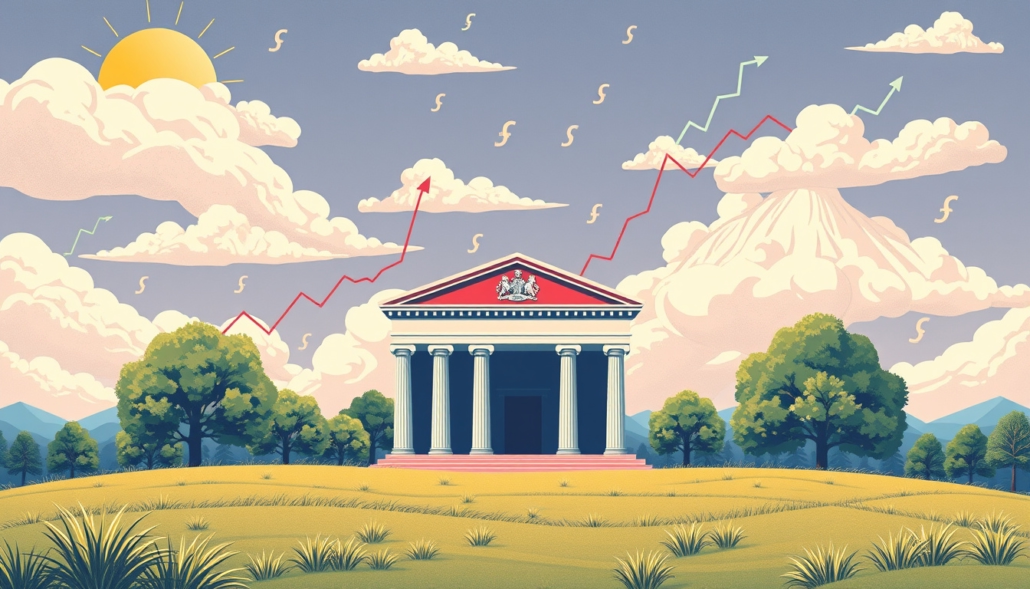Fed Chair Jerome Powell Signals Potential End of Quantitative Tightening, Uncertain Outlook on Interest Rates
October 14, 2025 — At the business economists’ meeting in Philadelphia, Federal Reserve Chair Jerome Powell spoke about how the bank nears the end of its plan to shrink its bond holdings. The Fed works to finish its move away from the large balance sheet built during the pandemic. Powell did not give a clear map for future interest rates. This leaves the market with some doubt.
Nearing the End of Balance Sheet Reduction
Powell said the Fed now holds over $6 trillion in securities. This number falls from nearly $9 trillion at the height of the pandemic. Since mid-2022 the bank has let securities mature and not reinvest the money. This step reduces the holdings and makes the money supply less loose.
"Our plan is to end the balance sheet runoff when reserves stay a bit above what we see as a safe level," Powell said. He meant that the bank thinks there is enough money in the system but not too much. He expects that level to come in the coming months.
This change goes against the bank’s earlier actions. Before, the Fed bought many Treasury and mortgage-backed securities to put more cash in the system and help the recovery. Now, with market conditions in change, the bank wants to keep enough cash for smooth payments while avoiding overheating the economy.
Implications for Financial Markets
Even if balance sheet issues sound tough, they affect market moves. Powell pointed out small signs that cash in the system is getting tighter. He warned that further cuts in the balance sheet might slow economic growth. Yet, he said that the bank will not go back to a balance sheet of around $4 trillion like before Covid.
Powell also talked about the interest paid on bank reserves. Some politicians, such as Senator Ted Cruz (R-Texas), have questioned this method. Powell sees it as important for keeping a close hold on short-term rates. He said, "If we stopped paying interest on reserves and other items, the Fed would lose control over rates." The bank faced brief losses when it raised rates quickly, but Powell expects its net income to soon show a rise.
Interest Rate Outlook: A Delicate Balancing Act
Powell repeated the main idea of the policy group, the FOMC. Leaders worry as signs of tightening in the labor market add to the challenge of keeping inflation in check while keeping people employed. Powell noted that though the jobless rate stayed low until August, the growth in payrolls is slower. This change is linked to fewer people working and new job seekers.
After a small rate drop in September, the market thinks there may be two more cuts this year. Powell was careful with his words. He said, "There is no free path in policy as we work with the challenge of meeting both our work and price goals."
Data Challenges and Economic Outlook
The government shutdown makes it hard for the Fed to get the latest data, like job reports and price measures. Powell said that the data they have shows the overall economic view stays steady since the last meeting. He also mentioned that rising costs for goods seem linked more to tariffs than to a deep rise in prices. He referred to upcoming data on consumer prices from the labor bureau.
Summary: What to Watch Next
- Quantitative Tightening: The bank nears the end of shrinking its bond holdings, with reserves close to a safe level.
- Interest Rates: There is no clear plan for rate moves; the bank works to balance price shifts and jobs.
- Labor Market: Signs show slower worker growth and tighter conditions.
- Economic Data: With ongoing data gaps, the summary of economic news needs care.
- Interest on Reserves: Paying interest on reserves helps the bank steer short-term rates. No plan exists to stop these payments despite some political criticism.
Powell’s words make it clear that even as the Fed ends one part of its plan, its path depends on new data and ongoing challenges in price and work problems.
This article is based on remarks by Federal Reserve Chair Jerome Powell on October 14, 2025, at the business economists’ meeting, with extra information on how the Fed manages its monetary policy.
Full money-growing playbook here:
youtube.com/@the_money_grower
